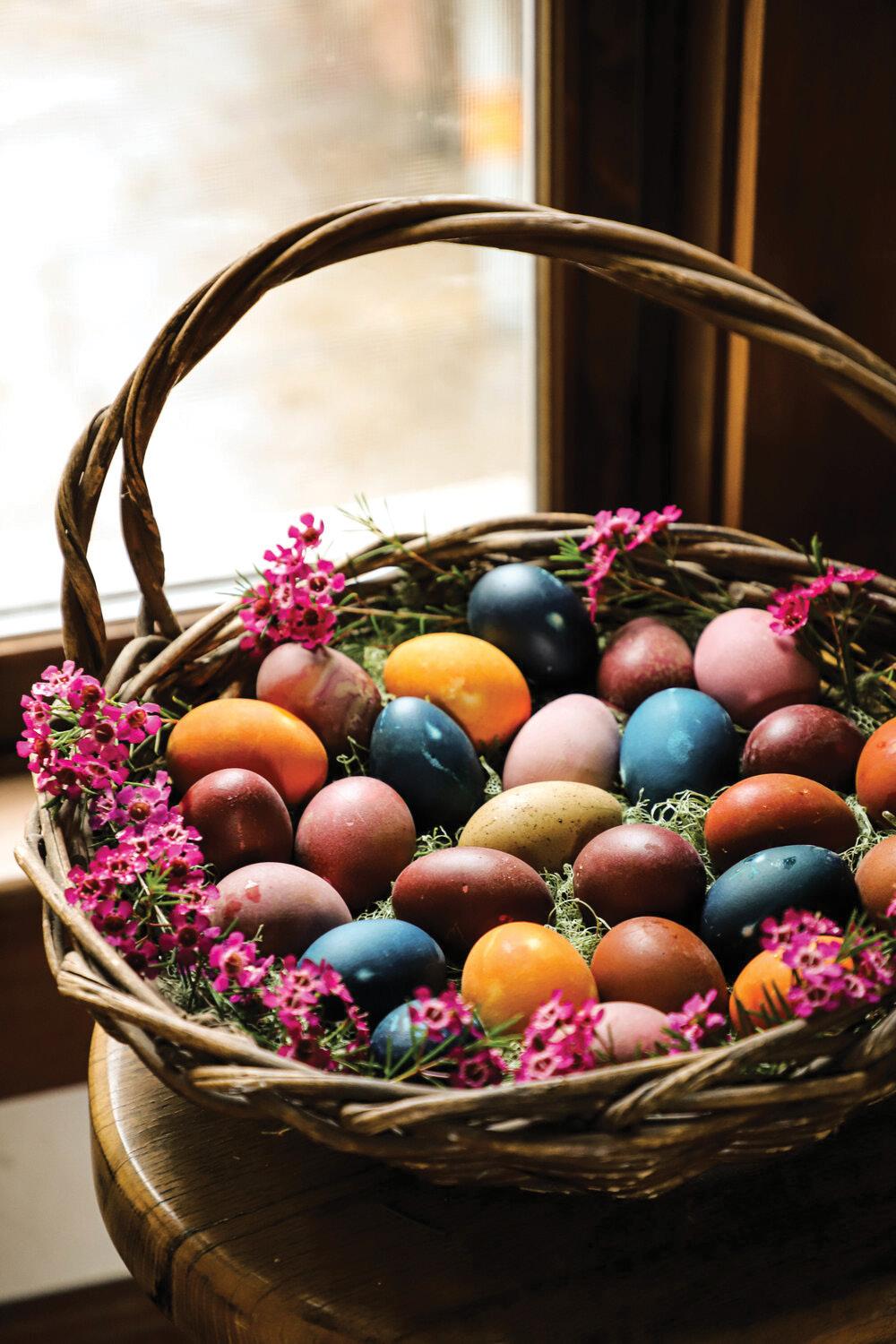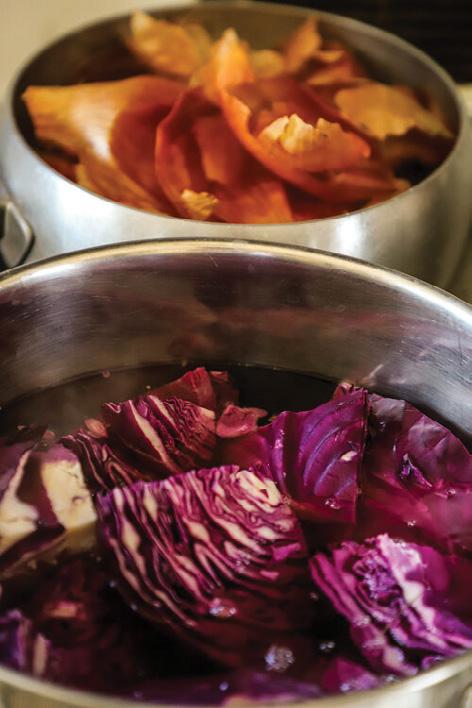
2 minute read
Easter Eggs to DYE for
Families who are treating eggs with extra special care this year will love this decorating technique that takes egg dyeing to another level. Coloring eggs naturally is not a new concept, but we just love the deep, rich colors (and number of options) created by Elizabeth Poett of The Ranch Table. Plus, using leftover food scraps to dye eggs is a fun, sustainable activity and exercise in experimentation and discovery! Your family may decide to turn it into an annual tradition. Below are 15 colors tested by Poett and the natural ingredients used to achieve each one. Results vary based on time spent soaking. Find easy step-by-step instructions at www.theranchtable.com/ blogs/field-notes/natural-easter-egg-dyes.
• Red—red onion skins (long soak)
• Reddish orange—paprika
• Pink—chopped beets (using white eggs)
• Maroon—chopped beets (using brown eggs)
• Burgundy—red wine
• Gold—yellow onion skins
• Yellow—turmeric
• Green—turmeric and red cabbage (soak in yellow first, then in the blue after it dries)
• Light blue—red cabbage (light soak)
• Indigo—red cabbage (long soak)

• Lavender—blueberries or Red Zinger tea
• Purple—red wine (long soak)
• Light brown—leftover coffee
• Dark brown—coffee (using brown eggs)
• Off-white—black tea
Photos courtesy of Elizabeth Poett, cookbook author and cattle rancher of Rancho San Julian on Santa Barbara’s Central Coast. Discover her cookbook at www.theranchtable.com/pages/the-ranch-table-cookbook-order.






